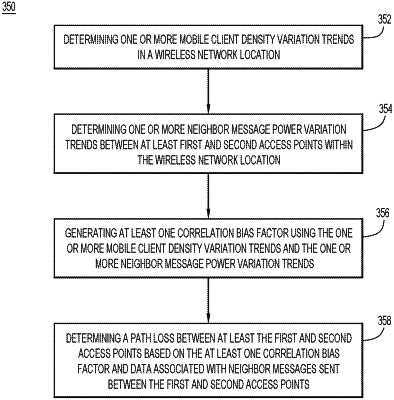| CPC H04W 52/242 (2013.01) [H04W 36/0061 (2013.01); H04W 52/245 (2013.01); H04W 52/343 (2013.01); H04W 16/225 (2013.01)] | 20 Claims |

|
1. A method comprising:
determining one or more mobile client density variation trends in a wireless network location over a first time period;
determining one or more neighbor message power variation trends for neighbor messages between at least a first access point and a second access point within the wireless network location over the first time period;
generating at least one correlation bias factor for the first time period by correlating the one or more mobile client density variation trends with the one or more neighbor message power variation trends over the first time period; and
determining a path loss between at least the first access point and the second access point using the at least one correlation bias factor.
|